Monetary Policy Report - July 2022
Loading...
Informe de Política Monetaria - July 2022
Date published
2022-10-12
Date
Authors
Office of the Deputy Technical Governor
Office for Monetary Policy and Economic Information
Inflation Section
Macroeconomic Programming Section
Advisors and Associate Researcher with the Programming and Inflation Department
Macroeconomic Modeling Department
Consultant and Researchers associated with the Macro-Economic Models Department
Office for Monetary Policy and Economic Information
Inflation Section
Macroeconomic Programming Section
Advisors and Associate Researcher with the Programming and Inflation Department
Macroeconomic Modeling Department
Consultant and Researchers associated with the Macro-Economic Models Department
Part of book title
ISSN
2111-2128
ISBN
Document language
eng
Metrics

downloads: 0
abstract_views: 0
Las opiniones contenidas en el presente documento son responsabilidad exclusiva de los autores y no comprometen al Banco de la República ni a su Junta Directiva.
The opinions contained in this document are the sole responsibility of the author and do not commit Banco de la República or its Board of Directors.
Abstract
In the second quarter, annual inflation (9.67%), the technical staff’s projections and its expectations continued to increase, remaining above the target. International cost shocks, accentuated by Russia's invasion of Ukraine, have been more persistent than projected, thus contributing to higher inflation. The effects of indexation, higher than estimated excess demand, a tighter labor market, inflation expectations that continue to rise and currently exceed 3%, and the exchange rate pressures add to those described above. High core inflation measures as well as in the producer price index (PPI) across all baskets confirm a significant spread in price increases. Compared to estimates presented in April, the new forecast trajectory for headline and core inflation increased. This was partly the result of greater exchange rate pressure on prices, and a larger output gap, which is expected to remain positive for the remainder of 2022 and which is estimated to close towards yearend 2023. In addition, these trends take into account higher inflation rate indexation, more persistent above-target inflation expectations, a quickening of domestic fuel price increases due to the correction of lags versus the parity price and higher international oil price forecasts. The forecast supposes a good domestic supply of perishable foods, although it also considers that international prices of processed foods will remain high. In terms of the goods sub-basket, the end of the national health emergency implies a reversal of the value-added tax (VAT) refund applied to health and personal hygiene products, resulting in increases in the prices of these goods. Alternatively, the monetary policy adjustment process and the moderation of external shocks would help inflation and its expectations to begin to decrease over time and resume their alignment with the target. Thus, the new projection suggests that inflation could remain high for the second half of 2022, closing at 9.7%. However, it would begin to fall during 2023, closing the year at 5.7%. These forecasts are subject to significant uncertainty, especially regarding the future behavior of external cost shocks, the degree of indexation of nominal contracts and decisions made regarding the domestic price of fuels.
Economic activity continues to outperform expectations, and the technical staff’s growth projections for 2022 have been revised upwards from 5% to 6.9%. The new forecasts suggest higher output levels that would continue to exceed the economy’s productive capacity for the remainder of 2022. Economic growth during the first quarter was above that estimated in April, while economic activity indicators for the second quarter suggest that the GDP could be expected to remain high, potentially above that of the first quarter. Domestic demand is expected to maintain a positive dynamic, in particular, due to the household consumption quarterly growth, as suggested by vehicle registrations, retail sales, credit card purchases and consumer loan disbursement figures. A slowdown in the machinery and equipment imports from the levels observed in March contrasts with the positive performance of sales and housing construction licenses, which indicates an investment level similar to that registered for the first three months of the year. International trade data suggests the trade deficit would be reduced as a consequence of import levels that would be lesser than those observed in the first quarter, and stable export levels. For the remainder of the year and 2023, a deceleration in consumption is expected from the high levels seen during the first half of the year, partially as a result of lower repressed demand, tighter domestic financial conditions and household available income deterioration due to increased inflation. Investment is expected to continue its slow recovery while remaining below pre-pandemic levels. The trade deficit is expected to tighten due to projected lower domestic demand dynamics, and high prices of oil and other basic goods exported by the country. Given the above, economic growth in the second quarter of 2022 would be 11.5%, and for 2022 and 2023 an annual growth of 6.9% and 1.1% is expected, respectively. Currently, and for the remainder of 2022, the output gap would be positive and greater than that estimated in April, and prices would be affected by demand pressures. These projections continue to be affected by significant uncertainty associated with global political tensions, the expected adjustment of monetary policy in developed countries, external demand behavior, changes in country risk outlook, and the future developments in domestic fiscal policy, among others.
The high inflation levels and respective expectations, which exceed the target of the world's main central banks, largely explain the observed and anticipated increase in their monetary policy interest rates. This environment has tempered the growth forecast for external demand. Disruptions in value chains, rising international food and energy prices, and expansionary monetary and fiscal policies have contributed to the rise in inflation and above-target expectations seen by several of Colombia’s main trading partners. These cost and price shocks, heightened by the effects of Russia's invasion of Ukraine, have been more prevalent than expected and have taken place within a set of output and employment recovery, variables that in some countries currently equal or exceed their projected long-term levels. In response, the U.S. Federal Reserve accelerated the pace of the benchmark interest rate increase and rapidly reduced liquidity levels in the money market. Financial market actors expect this behavior to continue and, consequently, significantly increase their expectations of the average path of the Fed's benchmark interest rate. In this setting, the U.S. dollar appreciated versus the peso in the second quarter and emerging market risk measures increased, a behavior that intensified for Colombia. Given the aforementioned, for the remainder of 2022 and 2023, the Bank's technical staff increased the forecast trajectory for the Fed's interest rate and reduced the country's external demand growth forecast. The projected oil price was revised upward over the forecast horizon, specifically due to greater supply restrictions and the interruption of hydrocarbon trade between the European Union and Russia. Global geopolitical tensions, a tightening of monetary policy in developed economies, the increase in risk perception for emerging markets and the macroeconomic imbalances in the country explain the increase in the projected trajectory of the risk premium, its trend level and the neutral real interest rate1. Uncertainty about external forecasts and their consequent impact on the country's macroeconomic scenario remains high, given the unpredictable evolution of the conflict between Russia and Ukraine, geopolitical tensions, the degree of the global economic slowdown and the effect the response to recent outbreaks of the pandemic in some Asian countries may have on the world economy.
This macroeconomic scenario that includes high inflation, inflation forecasts, and expectations above 3% and a positive output gap suggests the need for a contractionary monetary policy that mitigates the risk of the persistent unanchoring of inflation expectations. In contrast to the forecasts of the April report, the increase in the risk premium trend implies a higher neutral real interest rate and a greater prevailing monetary stimulus than previously estimated. For its part, domestic demand has been more dynamic, with a higher observed and expected output level that exceeds the economy’s productive capacity. The surprising accelerations in the headline and core inflation reflect stronger and more persistent external shocks, which, in combination with the strength of aggregate demand, indexation, higher inflation expectations and exchange rate pressures, explain the upward projected inflation trajectory at levels that exceed the target over the next two years. This is corroborated by the inflation expectations of economic analysts and those derived from the public debt market, which continued to climb and currently exceed 3%. All of the above increase the risk of unanchoring inflation expectations and could generate widespread indexation processes that may push inflation away from the target for longer. This new macroeconomic scenario suggests that the interest rate adjustment should continue towards a contractionary monetary policy landscape.
1.2. Monetary policy decision
Banco de la República’s Board of Directors (BDBR), at its meetings in June and July 2022, decided to continue adjusting its monetary policy. At its June meeting, the BDBR decided to increase the monetary policy rate by 150 basis points (b.p.) and its July meeting by majority vote, on a 150 b.p. increase thereof at its July meeting. Consequently, the monetary policy interest rate currently stands at 9.0% .
1 The neutral real interest rate refers to the real interest rate level that is neither stimulative nor contractionary for aggregate demand and, therefore, does not generate pressures that lead to the close of the output gap. In a small, open economy like Colombia, this rate depends on the external neutral real interest rate, medium-term components of the country risk premium, and expected depreciation.
Box 1: A Weekly Indicator of Economic Activity for Colombia
Juan Pablo Cote
Carlos Daniel Rojas
Nicol Rodriguez
Box 2: Common Inflationary Trends in Colombia
Carlos D. Rojas-Martínez
Nicolás Martínez-Cortés
Franky Juliano Galeano-Ramírez
Box 3: Shock Decomposition of 2021 Forecast Errors
Nicolás Moreno Arias
Description
Starting in October 2019, the quarterly Inflation Report produced by the technical staff of the Central Bank will be known as the Monetary Policy Report. The document, which is used for the technical staff´s monetary policy recommendation, will be published on the working day after the meeting of the BDBR in January, April, July, and October, simultaneously with the Board minutes.
Temática
Keywords
Keywords
Citation
Seleccionar año de consulta:

Esta obra está bajo licencia internacional Creative Commons Reconocimiento-NoComercial 4.0.
Este documento ha sido depositado por parte de el(los) autor(es) bajo la siguiente constancia de depósito
 Comunidades y colecciones
Comunidades y colecciones Statistics
Statistics Analíticas Google
Analíticas Google Mapa Composición JEL
Mapa Composición JEL
